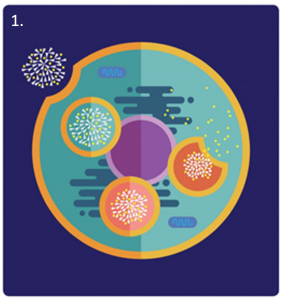Cross the cell membrane barrier: How smart polymers transfer therapeutics into cells
All of the cells in our body are covered by protective membranes that prevent invasions from bacteria and viruses. The cell membrane does not allow big molecules, such as proteins or RNA, to enter freely into cells.
Advances in modern medicine have seen the advent of advanced therapies such as gene therapy for the potential treatment of previously incurable genetic diseases. Further, mRNA vaccines against SARS-CoV-2, the virus responsible for the COVID-19 pandemic, have been developed as well as cell therapies for cancer treatment. All these treatments rely on the successful delivery of big therapeutic molecules into cells.
My research focuses on the development of smart polymer materials that function as delivery “vehicles”, that help therapeutic molecules cross the cell membrane barrier. I also use different techniques, trying to understand how these drug delivery “vehicles” interact with cells and transport within different compartments in the cell.
Learn more about Dr Shiqi Wang and the Nanomedicines and Biomedical Engineering Lab.


- Illustration of how smart polymers transfer therapeutics across the cell membrane by “hijacking” the natural intracellular vesicles.
- Transmission electronic microscopy image of cell nuclei and natural intracellular vesicles.


